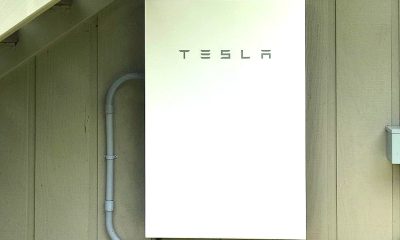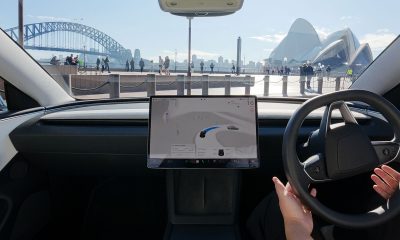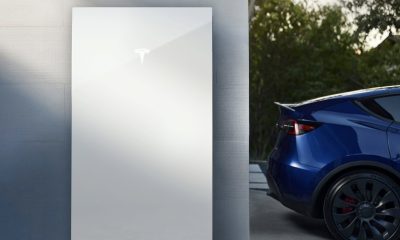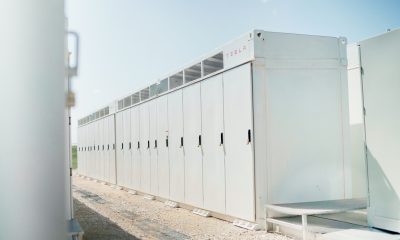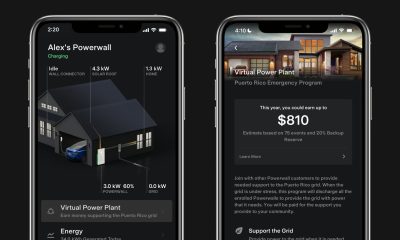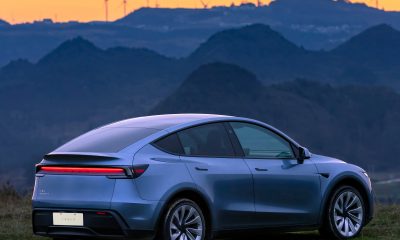
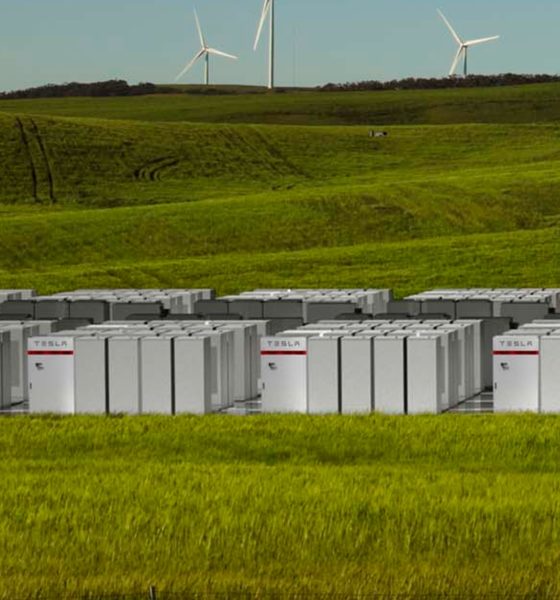
Energy
Tesla says its SA battery response time is too fast for utility billing system
Tesla’s 100 MW/129MWh Powerpack system near Jamestown in South Australia is proving to be so quick in providing backup power to the energy grid that 30-40% of the services it provides end up unpaid. The electric car and energy company claims that this is due to SA’s legacy utility billing system not being optimized for the big battery’s response time.
Tesla’s earnings from its big battery installation currently follow the standards set by the Australian Energy Market Operator (AEMO), which breaks down a power provider’s response time into 6 seconds, 1 minute, and 5 minutes for energy to be fed into the grid. Tesla’s SA Powerpack farm near Jamestown, however, has been providing backup energy in as quick as 200 milliseconds. Thus, any amount of energy sent from Tesla’s battery into the grid that lasts between 200 milliseconds and 6 seconds is just too quick to be registered according to AEMO’s current specifications.
In a statement to The Sydney Morning Herald, Tesla stated that around 30%-40% of services provided by the SA big battery ended up unpaid due to the system’s quick response time. Tesla further asserted that AEMO’s standards are currently designed for fossil fuel-based backup systems, which respond to energy grid instabilities far slower than the industry-grade Powerpack batteries.
“Tesla estimates that the Hornsdale Power Reserve battery has delivered 30 to 40% of its services to frequency markets without being paid due to existing AEMO technical specifications being written based on fossil fuel generation assets.
“Current standards compensate batteries for their capacity based on fossil generator response rates, despite the ability to provide a faster ramp time. This makes it difficult for the full value of fast-responding technologies to be recognized in the current contingency FCAS markets.”
Over the past few months, Tesla’s SA Powerpack farm, which currently stands as the largest lithium-ion battery installation in the world, has been pivotal in stabilizing the energy grid in South Australia. Last December alone, Tesla’s 100 MW/129MWh installation accomplished a huge feat, keeping the region’s energy stable amidst the unexpected failure of the coal-powered Loy Yang A power plant in Victoria. During that time, Tesla’s Powerpacks backed up the grid within 0.14 seconds after the unexpected breakdown of the coal-powered plant. The system also supported the grid hundreds of times over the course of the month.
The performance of Tesla’s big battery in South Australia was recently examined by energy expert Hugh Saddler, who studied the charge and discharge patterns of the installation. Over the course of his tests, Saddler noted that the Powerpack farm exhibited great efficiency, with 30% of the battery’s 100MW capacity being allocated to the system’s daily charge and discharge cycles, and the rest being allotted to keep the energy grid’s frequency at a steady 50 Hz and 240 volts.
Tesla’s energy initiatives in South Australia recently met a series of roadblocks, however, with South Australia resource minister Matt Canavan mocking the SA Powerpack farm by calling it the “Kardashian” of the energy industry and alleging that the installation is simply “famous for being famous.” Newly-elected South Australia premier Steven Marshall has also gone on the offensive against the Elon Musk-led company’s projects, stating that his government would not be supporting Tesla’s proposal of building a 250 MW/650 MWh virtual power plant from 50,000 low-income residential units and home Powerwall 2 systems.
Energy
Tesla and Samsung SDI in talks over new US battery storage deal: report
The update was related by industry sources and initially reported by South Korean news outlets.

Recent reports have suggested that Tesla and Samsung SDI are in talks over a potential partnership to supply batteries for large-scale energy storage systems (ESS).
The update was related by industry sources and initially reported by South Korean news outlets.
ESS batteries to be built at Samsung’s Indiana plant
As noted in a report from Korea JoongAng Daily, the demand for energy storage systems has been growing rapidly in North America, thanks in no small part to the surge in AI investments across numerous companies. With this in mind, Tesla has reportedly approached Samsung SDI about a potential battery supply deal.
The deal is reportedly worth over 3 trillion Korean won (approximately $2.11 billion) and will span three years, according to The Korea Global Economic Daily. A battery supply deal with Samsung SDI could make sense for Tesla as the company already has a grid-scale battery, the Megapack, which is perfect for industrial use. Samsung SDI could simply supply cells for the EV maker.
Production of the batteries would reportedly take place at Samsung SDI’s joint venture factory with Stellantis in Indiana, which is currently under construction. Samsung SDI recently announced plans to use part of that plant’s EV lines to produce cells for ESS, with a targeted capacity of 30 GWh by the end of next year.
Tesla and Samsung’s partnership
At present, only a handful of manufacturers, including Korea’s LG Energy Solution, Samsung SDI, SK On, and Japan’s Panasonic, are capable of producing energy storage-scale batteries domestically in the United States. A Samsung SDI official issued a comment about the matter, stating, “Nothing has been finalized regarding cooperation with Tesla.”
The possible energy storage system deal adds another layer to Tesla’s growing collaboration with Samsung, which is already in line as a partner in the upcoming production of Tesla’s AI5 and AI6 chips. Early sample manufacturing of the AI6 is expected to begin in South Korea, with mass production slated for Samsung’s Texas-based Taylor foundry when it starts operations.
The AI6 chip will power Tesla’s next wave of high-volume projects, including the Optimus humanoid robot and the autonomous Cybercab service. Musk has called the partnership with Samsung a “real collaboration,” adding that he personally plans to “walk the line” at the Taylor facility to speed up progress.
Energy
Tesla VP hints at Solar Roof comeback with Giga New York push
The comments hint at possible renewed life for the Solar Roof program, which has seen years of slow growth since its 2016 unveiling.

Tesla’s long-awaited and way underrated Solar Roof may finally be getting its moment. During the company’s Q3 2025 earnings call, Vice President of Energy Engineering Michael Snyder revealed that production of a new residential solar panel has started at Tesla’s Buffalo, New York facility, with shipments to customers beginning in the first quarter of 2026.
The comments hint at possible renewed life for the Solar Roof program, which has seen years of slow growth since its 2016 unveiling.
Tesla Energy’s strong demand
Responding to an investor question about Tesla’s energy backlog, Snyder said demand for Megapack and Powerwall continues to be “really strong” into next year. He also noted positive customer feedback for the company’s new Megablock product, which is expected to start shipping from Houston in 2026.
“We’re seeing remarkable growth in the demand for AI and data center applications as hyperscalers and utilities have seen the versatility of the Megapack product. It increases reliability and relieves grid constraints,” he said.
Snyder also highlighted a “surge in residential solar demand in the US,” attributing the spike to recent policy changes that incentivize home installations. Tesla expects this trend to continue into 2026, helped by the rollout of a new solar lease product that makes adoption more affordable for homeowners.
Possible Solar Roof revival?
Perhaps the most intriguing part of Snyder’s remarks, however, was Tesla’s move to begin production of its “residential solar panel” in Buffalo, New York. He described the new panels as having “industry-leading aesthetics” and shape performance, language Tesla has used to market its Solar Roof tiles in the past.
“We also began production of our Tesla residential solar panel in our Buffalo factory, and we will be shipping that to customers starting Q1. The panel has industry-leading aesthetics and shape performance and demonstrates our continued commitment to US manufacturing,” Snyder said during the Q3 2025 earnings call.
Snyder did not explicitly name the product, though his reference to aesthetics has fueled speculation that Tesla may finally be preparing a large-scale and serious rollout of its Solar Roof line.
Originally unveiled in 2016, the Solar Roof was intended to transform rooftops into clean energy generators without compromising on design. However, despite early enthusiasm, production and installation volumes have remained limited for years. In 2023, a report from Wood Mackenzie claimed that there were only 3,000 operational Solar Roof installations across the United States at the time, far below forecasts. In response, the official Tesla Energy account on X stated that the report was “incorrect by a large margin.”
Energy
Tesla China’s Megafactory helps boost Shanghai’s battery exports by 20%: report
Located in the Lingang New Area of the Shanghai Free Trade Zone, the Tesla Megafactory has been running at full throttle since opening in February.
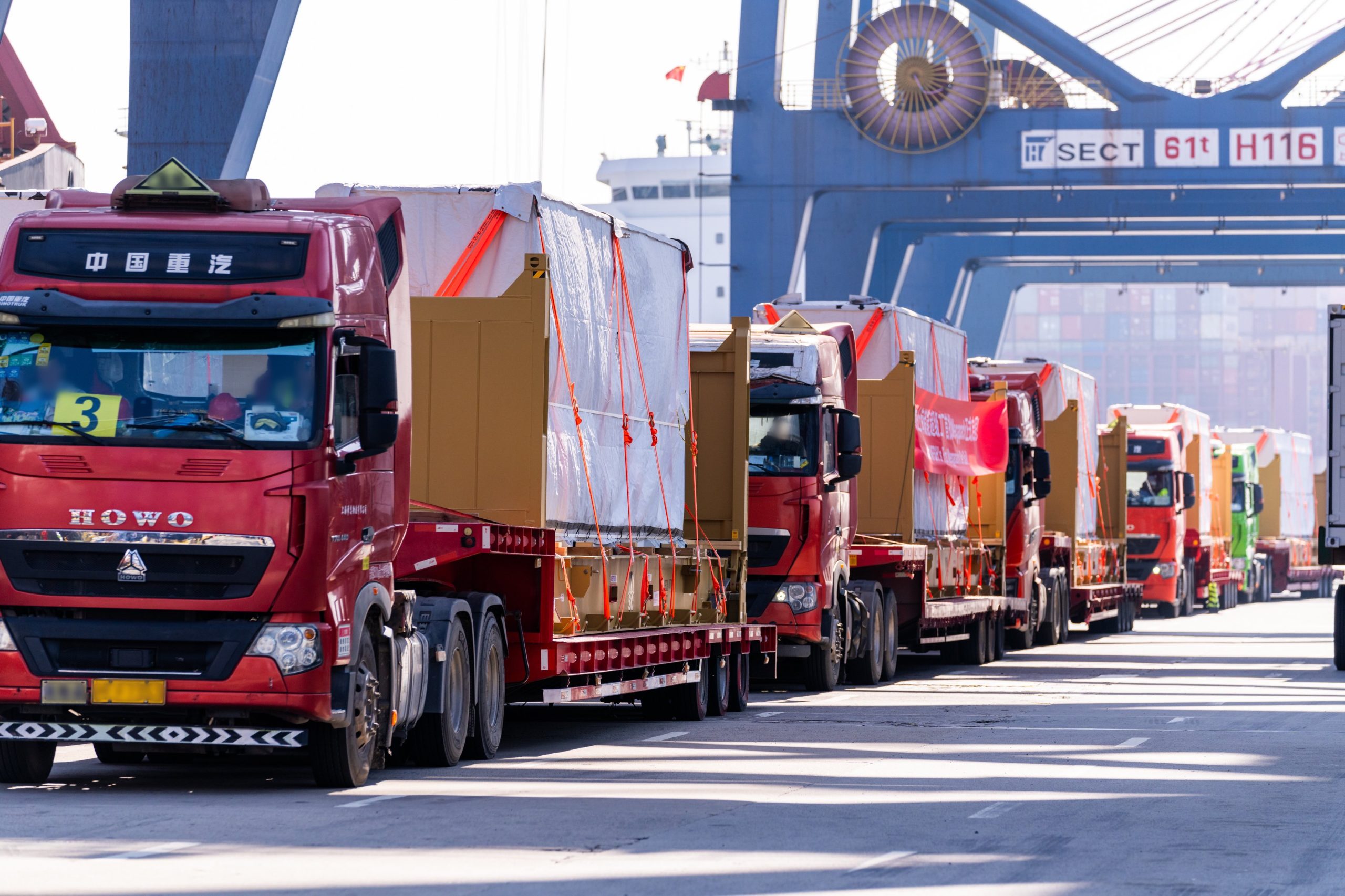
Reports from China have indicated that the Tesla Shanghai Megafactory has become a notable player in China’s booming battery export market.
Located in the Lingang New Area of the Shanghai Free Trade Zone, the Tesla Megafactory has been running at full throttle since opening in February. It produces Tesla Megapack batteries for domestic and international use.
Tesla Shanghai Megafactory
As noted in a report from Sina Finance, the Tesla Shanghai Megafactory’s output of Megapack batteries helped drive a notable rise in lithium battery shipments from the city in the first three quarters of 2025. This is quite impressive as the Megafactory is a rather young facility, though it has been steadily increasing its production capacity.
“The establishment of this benchmark factory has not only driven the rapid development of Shanghai’s energy storage industry but also become a new growth engine for foreign trade exports. Driven by the Tesla energy storage factory’s opening, Shanghai’s lithium battery exports reached 32.15 billion yuan ($4.5 billion) in the first three quarters, a 20.7% increase,” the publication wrote.
Ultimately, the Shanghai Megafactory has proved helpful to the city’s “new three” industries, which are comprised of new energy vehicles, lithium batteries, and photovoltaic systems. Exports of the “new three” products reached 112.17 billion yuan ($15.7 billion), a 6.3% year-over-year increase during the same period. The city’s total trade volume grew 5.4% year-over-year as well, with exports up 11.3%, driven largely by the clean energy sector’s performance.
Energy storage is helping Shanghai
Since opening in February, the Shanghai Megafactory has been firing on all cylinders. In late July, Tesla Energy announced that the new battery factory has successfully produced its 1,000th Megapack unit. That’s quite impressive for a facility that, at the time, had only been operational for less than six months.
Speed has always been a trademark of the Shanghai Megafactory. Similar to Tesla’s other key facilities in China, the Megafactory was constructed quickly. The facility started its construction on May 23, 2024. Less than a year later, the site officially started producing Megapack batteries. By late March 2025, Tesla China noted that it had shipped the first batch of Megapack batteries from the Shanghai plant to foreign markets.
-

 News1 week ago
News1 week agoTesla Cybercab spotted testing on public roads for the first time
-

 Elon Musk7 days ago
Elon Musk7 days agoNeuralink’s first patient could receive an upgrade: Elon Musk
-
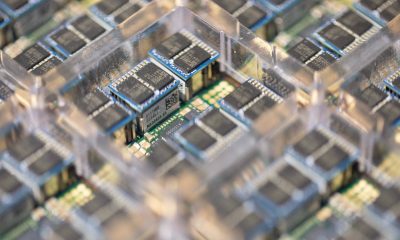
 Elon Musk4 days ago
Elon Musk4 days agoElon Musk subtly confirms one of Tesla AI8’s uses, and it’s literally out of this world
-
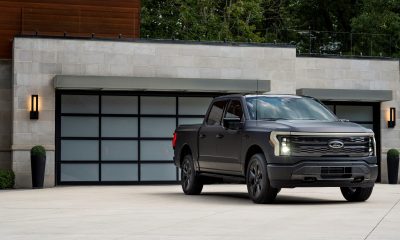
 News14 hours ago
News14 hours agoFord reportedly considers cancelling F-150 Lightning: ‘The demand is just not there’
-

 News2 weeks ago
News2 weeks agoTesla ‘Mad Max’ gets its first bit of regulatory attention
-

 News3 days ago
News3 days agoTesla Cybertruck explosion probe ends with federal involvement and new questions
-

 News1 week ago
News1 week agoNeuralink’s first human patient reflects on 21 months with brain implant “Eve”
-
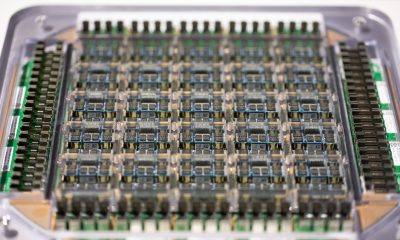
 News2 weeks ago
News2 weeks agoTesla shares AI5 chip’s ambitious production roadmap details



